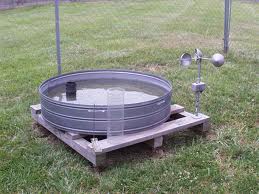Prediction of daily pan evaporation using neural networks models
Keywords:
Artificial neural networks, Back propagation algorithm, Coefficient of determination, Evaporation, Index of agreement, Modeling, Multiple linear regression, Pan evaporationAbstract
The investigation was carried out to develop and test the daily pan evaporation prediction models using various weather parameters as input variables with artificial neural network (ANN) and validated with the independent subset of data for five different locations in India. The measured variables included daily observations of maximum and minimum temperature, maximum and minimum relative humidity, wind speed, sunshine hours, rainfall and pan evaporation. In this general model (GM) model development and evaluation has been done for the five locations viz. NRCC, Nagpur (M.S.); JNKVV, Jabalpur (M.P.); PDKV, Akola (M.S.); ICRISAT, Hyderabad (A.P.) and MPUAT, Udaipur (Raj.). The daily data of pan evaporation and other inputs for two years was considered for model development and subsequent 1-2 years data for validation. Weather data consisting of 3305 daily records from 2002 to 2006 were used to develop the GM models of daily pan evaporation. Additional weather of Nagpur station, which included 2139 daily records from 1996 - 2004, served as an independent evaluation data set for the performance of the models. The model plan strategy with all inputs has shown better performance than the reduced number of inputs. The General ANN models of daily pan evaporation with all available variables as a inputs was the most accurate model delivering an R2 of 0.84 and a root mean square error 1.44 mm for the model development data set. The GM evaluation with Nagpur model development (NMD) data shown lowest RMSE (1.961 mm), MAE (0.038 mm) and MARE (2.30 %) and highest r (0.848), R2 (0.719) and d (0.919) with ANN GM M-1with all input variables.
References
Arca, B., Benincasa F., De Vincenzi M., Ventura A., 1998. Neural network to simulate evaporation from Class A pan.
In: Proc. 23rd Conf. on Agricultural and Forest Meteorology, 2-6 November 1998, Albuquerque, New Mexico,
Am. Meteorol. Soc., Boston, MA.
Bruton, J.M., McClendon R.W., Hoogenboom, G., 2000. Estimating daily pan evaporation with artificial neural
networks. Trans. ASAE, 43 (2), 491-496.
de Villiers, J., Barnard, E., 1993. Back propagation neural nets with one and two hidden layers. IEEE Transactions on
Neural Networks, 4(1), pp. 136-141.
Deswal S., Mahesh, Pal., 2008. Artificial Neural Network based Modeling of Evaporation Losses in Reservoirs. Proc.
of World Academy of Science, Engineering and Technology, Vol. 29, 279-283.
Gavin, H., Agnew, C.A., 2004. Modeling actual, reference and equilibrium evaporation from a temperate wet
grassland. Hydrol. Processes, 18, 229-246.
Gardner, M.W., Dorling, S.R., 1998. Artificial neural network (Multilayer Perceptron) a review of applications in
atmospheric sciences. Atmospheric Environment. 32, 2627-2636.
Han, H., Felkar P., 1997. Estimation of daily soil water evaporation using an artificial neural network. J. Arid
Environ. 37 (2), 251-260.
Jhajharia, D., Kithan, S.B., Fancon, A.K., 2006. Correlation between pan evaporation and metrological parameters
under the climatic conditions of Jorhat (Assam). J. of Indian Water Resources, 26 (1-2) , 39-42.
Keskin, M.E., Terzi, O., 2006. Artificial neural network models of daily pan evaporation. ASCE J. of Hydrologic
Engineer. 11 (1) , 65-70.
Khanikar, P.G., Nath K.K., 1998. Relationship of open pan evaporation rate with some important meteorological
parameters. J. Agril. Sci. Soc. N - E India. 11(1), 46-50.
Kumar, M., Raghuwanshi, N.S., Singh, R., Wallender W.W., Pruitt, W.O., 2002. Estimating evapo-transpiration using
artificial neural network. J. Irri. Drain. Engg. ASCE, 128 (4), 224-233.
Maier, H.R., Dandy, G.C., 2001. Neural network based modelling of environmental variables: a systematic
approach. Mathematical and Computer Modelling, 33, pp. 669-682.
Molina Martinez J.M., Alvarezv, M., Gonzalez Real M.M., Baille, A., 2006. A simulation model for predicting hourly
pan evaporation from meteorological data. J. hydrol. 318 (1-4), 250-261.
Ozlem, T., Evolkesk, M., 2005. Modeling of daily pan evaporation. J. Appl. Sci. 5 (2), 368-372.
Shirgure, P.S., Srivastava A.K., Singh S., 2001. Effect of pan evaporation based irrigation scheduling on yield and
quality of drip irrigated Nagpur mandarin. Indian J. Agri. Sci. 71 (4), 264 – 266.
Shirgure, P.S., 2011. Evaporation modeling with neural networks – A Research review. International Journal of
Research and Reviews in Soft Intelligent Computing. 1 (2),37-47.
Shrivastava, S.K., Sahu, A.K., Dewangan, K. N., Mishra, S. K., Upadhyay A. P., Dubey, A. K., 2001. Estimating pan
evaporation from meteorological data for Jabalpur. Indian J. Soil. Cons. 29 (3), 224-228.
Sudheer, K.P., Gosain, A.K., Mohana, R.D., Saheb, S.M., 2002. Modeling evaporation using an artificial neural
network algorithm. Hyd. Processes, 16, 3189-3202.
Sudheer, K.P., Gosain A.K., Ramasastri, K.S., 2003. Estimating actual evapotranspiration from limited climatic data
using neural computing technique. J. Irri. Drain. Engg. ASCE. 129 (3), 214-218.
Taher, S.A., 2003. Estimation of potential evaporation: Artificial Neural Networks versus Conventional methods. J.
King. Saud. Univ. Eng. Sci. 17(1), 1-14.

Published
How to Cite
Issue
Section
Copyright (c) 2012 Parameshwar Sidramappa Shirgure, G S Rajput

This work is licensed under a Creative Commons Attribution-NonCommercial-NoDerivatives 4.0 International License.



